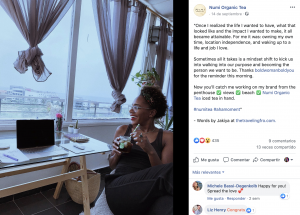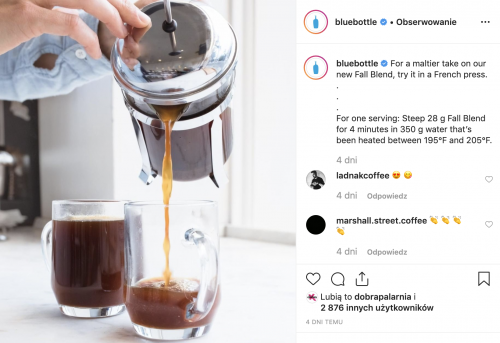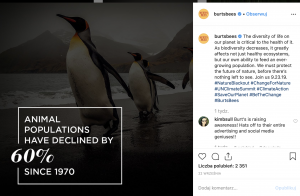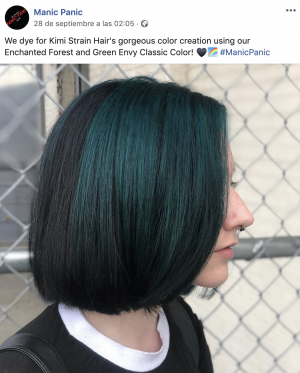
Social media is no longer the supporting actor in the e-commerce series – it's now more of a main character.
As of August 2019, 30% of US internet users aged 18-34 state they have bought something through social media. This age range is crucial for businesses, as millennials are a massive e-commerce consumer group – they make a whopping 60% of their purchases online!
That’s a significant finding for ecommerce professionals. It means that social media is not just a place for the occasional photo; leveraged the right way, it can be a powerful tool to convert visitors into paying customers.
With this article, you'll learn:
- How to make social media a part of your e-commerce marketing strategy
- How to increase audience engagement on social media
- How to increase trust and loyalty through social media
- How e-commerce brands use social media to build a community of devoted customers
Ready to harness the power of social media to boost your e-commerce business? Let's begin!
Social commerce – what it is and why you should care
Social commerce refers to purchasing and selling things directly through social media, on platforms like Facebook, Instagram or Pinterest.
Even though this field is relatively young, the early indications are quite promising. 60% of users state that they find out about new products through Instagram. The platform facilitates sales through a range of e-commerce related features, such as price tags:

Clicking on these will redirect you to a mobile page with a CTA linking to the e-commerce website.
And that's just the tip of the iceberg! You can read about more selling practices for social media in this extensive guide to social commerce.
Why social commerce works
From the agoras of ancient Greece and the buzzing markets of the Middle East to the malls of the USA, shopping is traditionally a social activity. Social media and sales are a natural fit. Here's why social commerce is successful:
-
You can show your products in action – Instead of looking at polished posters, the customers can see the items as pictured by real customers. This way, they know exactly what they're getting and are more likely to trust the seller.
-
You can reach new, enthusiastic audiences – Social media comes with emotions, and emotions come with high engagement. Once the users start following your brand and engaging with the content you share, they're more likely to stay.
-
You can leverage the power of brand ambassadorship – Here comes the exciting subject of influencer marketing. Social media relies on strong personalities and people with a story to tell. If you find an influential figure and they become a brand evangelist, you're sure to gain a loyal following (and a lot of valuable exposure).
-
You can shorten the customer journey – Instead of leading the user through multiple pages to finally reach the checkout, you can allow them to make the purchase directly from the social media app. Making the process easier improves the user experience, decreases drop-out rates and, eventually, increases your revenues. It's a win-win solution!
How to increase customer engagement through social media
Alright then, let's move on to practical tips!
Start a conversation
First of all, you need to realize that social media marketing is not about simply telling people to buy your product. Unlike traditional marketing channels, social media is a two-way conversation.
Instagram and Facebook are the main means of expression for millions of people around the globe. Why not consider this as an opportunity to communicate with your customers?
You can start with a simple yet engaging question:

HARA The Label is an Australian online clothing store selling sustainable underwear and basics.
Or, tell a customer’s story to spark a discussion, like Numi Tea:

Numi Organic Tea blends premium organic teas and herbs with only 100 percent real ingredients.
Or encourage your users to get creative, like Urban Outfitters. Note how they're reusing content previously shared on their Twitter account:

Urban Outfitters is a lifestyle retailer dedicated to inspiring customers through a unique combination of product, creativity and cultural understanding.
Share your knowledge and ideas
Both content marketing and social media aim to answer customers' needs and help them find what they're looking for.
While scrolling their Instagram feed, your potential customer may find inspiration for their bento box, summer outfit or a foolproof coffee recipe:

Blue Bottle is a California-based coffee roaster and retailer, a major player in the third wave coffee movement. The company managed to grow from a small coffee shop into a major e-commerce brand through social media and content marketing.
Social media is not limited to cute pictures and inspirational quotes, though. It can be used for educational purposes as well.
If there's a cause you care about, don't hesitate to raise awareness among your customers:

Burt’s Bees is an eco-conscious skincare brand, known for its unconventional social media campaigns.
Last but not least, sharing your ideas, bits of industry-related information, how-tos and fun facts are a great way to increase brand awareness.
Even if a person doesn't need to buy your products right away, they will remember the name of your e-commerce store. You're more likely to become the top of mind brand – the one they'll think about when they need an item you're selling.
Leverage user-generated content
Almost all consumers (90%) say that authenticity is crucial when they choose the brands they like and support. What's more, 79% of them openly say that user-generated content has a huge impact on their decisions.
When people are happy with your brand, they will organically post pictures with your products. Manic Panic, an iconic hair dye brand with 40 years of experience, knows how to make the most of it.
They regularly repost pictures of happy customers showing off hairstyles created with Manic Panic hair color products:

Manic Panic is a leading alternative hair color & cosmetics company.
The same principle applies to other e-commerce niches. When it comes to the accessories industry, Daniel Wellington is one of the top players in the game. Aside from targeting large-scale influencers only, the Swedish watchmaker reaches out to micro-influencers and encourages their clients to share user-generated content. The best entries are shared under the hashtag #DWPickoftheDay:

When it comes to the accessories industry, Daniel Wellington is one of the top players in the game.
Another brand, TOMS, reposts outfits created by its customers:

TOMS offers a variety of footwear styles for men, women and kids.
There is more to user-generated content than simply creating engagement – it's about building trust, too! In the next part of this article, we're going to talk about other methods of increasing your e-commerce brand's credibility.
Building trust with social media
Create a community
Appreciating user-generated content creates a sense of community with your customers. They feel that their opinions and contributions matter and are good enough to be used as a part of your brand's marketing strategy.
When a consumer sees that a piece created by another consumer gets featured, they can relate and feel like a part of something bigger – a community.
Here's an example from Black Milk Clothing, an Australian e-commerce company selling alternative wear:

Even the caption creates a sense of belonging!
Be responsive
When a customer reaches out to your company, don't leave them hanging on. If they are the first one to call, write a message or even tag you on social media, it means they genuinely care. It might be the beginning of a long-lasting relationship, so be sure to address even the smallest mentions!
Hailing from the basic principles of customer service, this rule is widely applied, from Instagram comments to tweets. Even giants like Starbucks leave no message unanswered:

Can't fulfill the request? Don't skip the question either. Follow the example of Thredup, the world’s largest e-commerce thrift store:

thredUP is the best resource for high quality secondhand clothing, shoes and handbags for women and kids.
Never underestimate the power of user reviews
Social proof is one of the most powerful psychological tools. Because of that, the opinions of your customers can make it or break it. If you're not entirely convinced, here are some statistics to illustrate this fact:
- Almost 95% of online shoppers read reviews before they make a purchase
- 84% of people state that they trust online reviews as much as personal recommendations.
- Businesses who reply to at least one in four reviews have a 35% higher conversion rate on average
As we’ve mentioned previously, social media is based on dialogue. Your customers can react to anything you publish. They don’t necessarily have to publish their reviews on your e-commerce website. If they feel like sharing an opinion, they might as well comment on your Instagram or Facebook posts. No matter if the reviews are favorable or not, be sure to answer all of them. People want to be heard.

Key takeaways
E-commerce marketing comes with hundreds of possibilities. A social media presence can be more than just a trendy addition – it can be an integral part of your business strategy.
This blog post is meant to show how social media can have a real impact on growing your e-commerce brand. We hope you’ve found some new ideas for your business!
About the Author 
Pawel is the co-founder of Growcode, the first conversion rate optimization System as a Service that guarantees revenue growth for B2C online stores. With 10+ years of ecommerce experience, Pawel has been helping companies (e.g. Limango, Virgin Mobile, Eniro, 4F, Showroom, Budapester) leverage data from their online channels to improve user experience that results in higher conversion rates, average order value and customer lifetime value.
from Wishpond https://ift.tt/34jnlCw
via IFTTT
Comments
Post a Comment